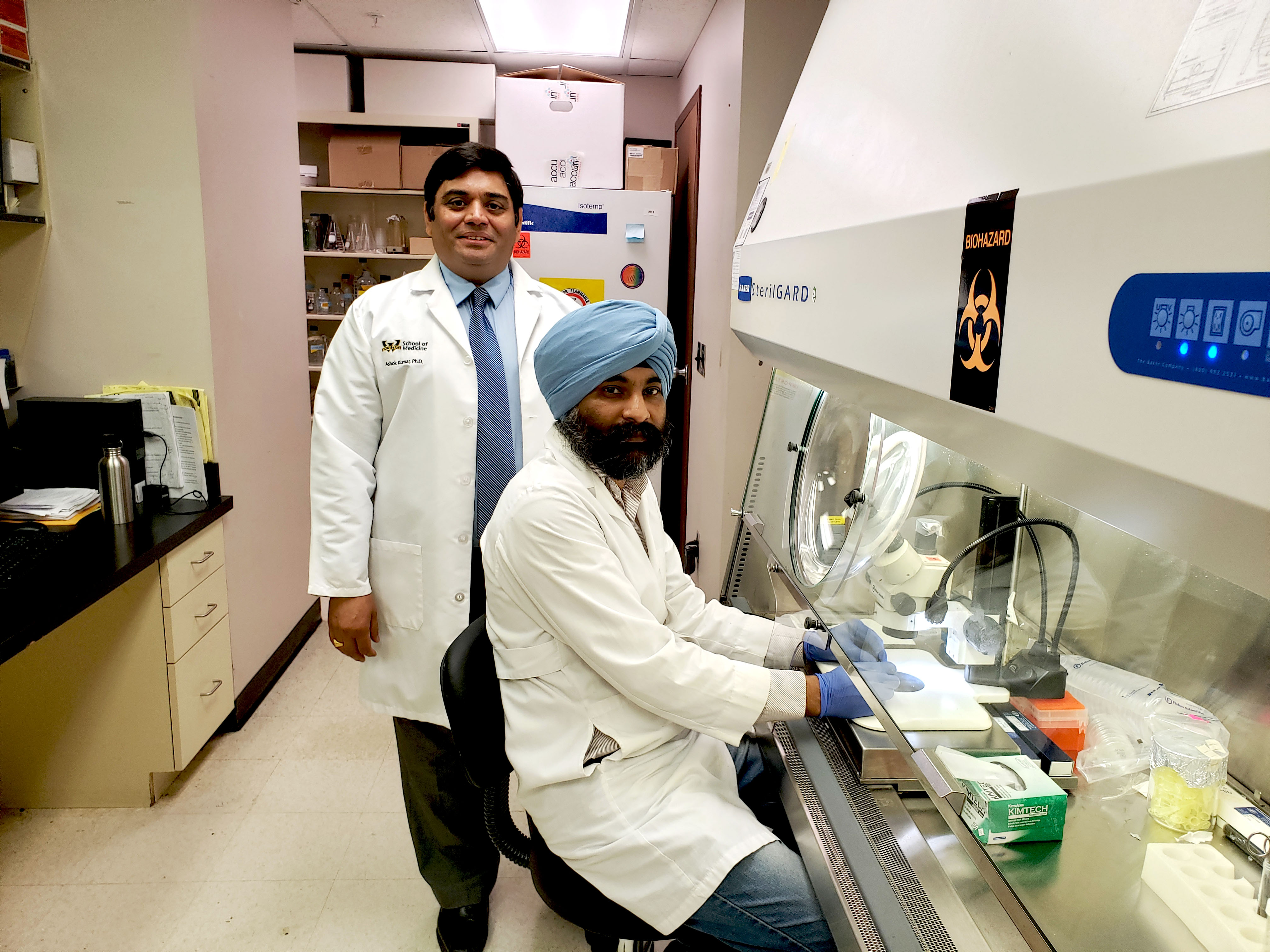A post-doctoral fellow working in the Wayne State University School of Medicine’s Department of Ophthalmology, Visual and Anatomical Sciences was recognized for his study of a bacterial threat to vision by the world’s largest eye and vision organization.
Sukhvinder Singh, Ph.D., a postdoctoral fellow in the laboratory of Ashok Kumar, Ph.D., associate professor of

Ophthalmology, Visual and Anatomical Sciences, received second prize in the Dr. Raniyah Ramadan Foundation Young Investigator Award in Microbiology. The award is given to recognize the best ocular microbiology presentations at the Association for Research in Vision and Ophthalmology's annual meeting, set for May 3, 2020, in Baltimore, Md.
Dr. Singh won for his study, “Integrative metabolomics and transcriptomic analysis reveals a Krebs cycle metabolite, itaconate, in promoting inflammation resolution in bacterial endophthalmitis.”
“I want to extend my deepest gratitude to my mentor, Dr. Kumar, who empowers his trainees to perform and succeed at their highest levels,” Dr. Singh said. “His guidance, encouragement and unwavering support led me to carry out this award-winning research.”
Dr. Singh’s research focuses on the pathobiology of bacterial endophthalmitis. The infections caused by the bacteria usually occur due to trauma to the eye or post-surgical complications. The bacterial infection inside the eye has distinct pathology compared to systemic infections. The retinal tissue damage results from the combined actions of bacterial virulence factors and persistent inflammation. An ideal treatment, he said, should aim for both bacterial eradication and inflammation resolution.
“The key finding in this study is that we have discovered a chemical compound (metabolite) called itaconate whose levels are tremendously increased in an experimental mouse model of bacterial endophthalmitis. One of the unique aspects of this metabolite is that it is naturally produced by host cells during cellular metabolism, and it exerts anti-inflammatory actions,” Dr. Singh explained. “We demonstrated that when directly injected in the eye, this compound protects the mice from bacterial endophthalmitis. Moreover, the efficacy is even better when used in combination with antibiotics.”
The current management of bacterial endophthalmitis involves local or systemic antibiotic therapy, “which is highly effective in killing the bugs, but does little to reduce inflammation,” Dr. Singh said. “The major impact of our study is to proof-of-concept that this endogenously-produced host cellular metabolite/compound can be used as an adjunct anti-inflammatory therapy along with antibiotics to improve visual outcome in endophthalmitis or other ocular infections.”
“My laboratory is fortunate to receive this recognition, and I am grateful to Dr. Raniyah Ramadan’s family for establishing this prestigious award to recognize best research conducted by trainees,” Dr. Kumar said. “Sukhvinder is now one of the three post-doctoral fellows from my lab to get this recognition. I am very proud of his achievements.”